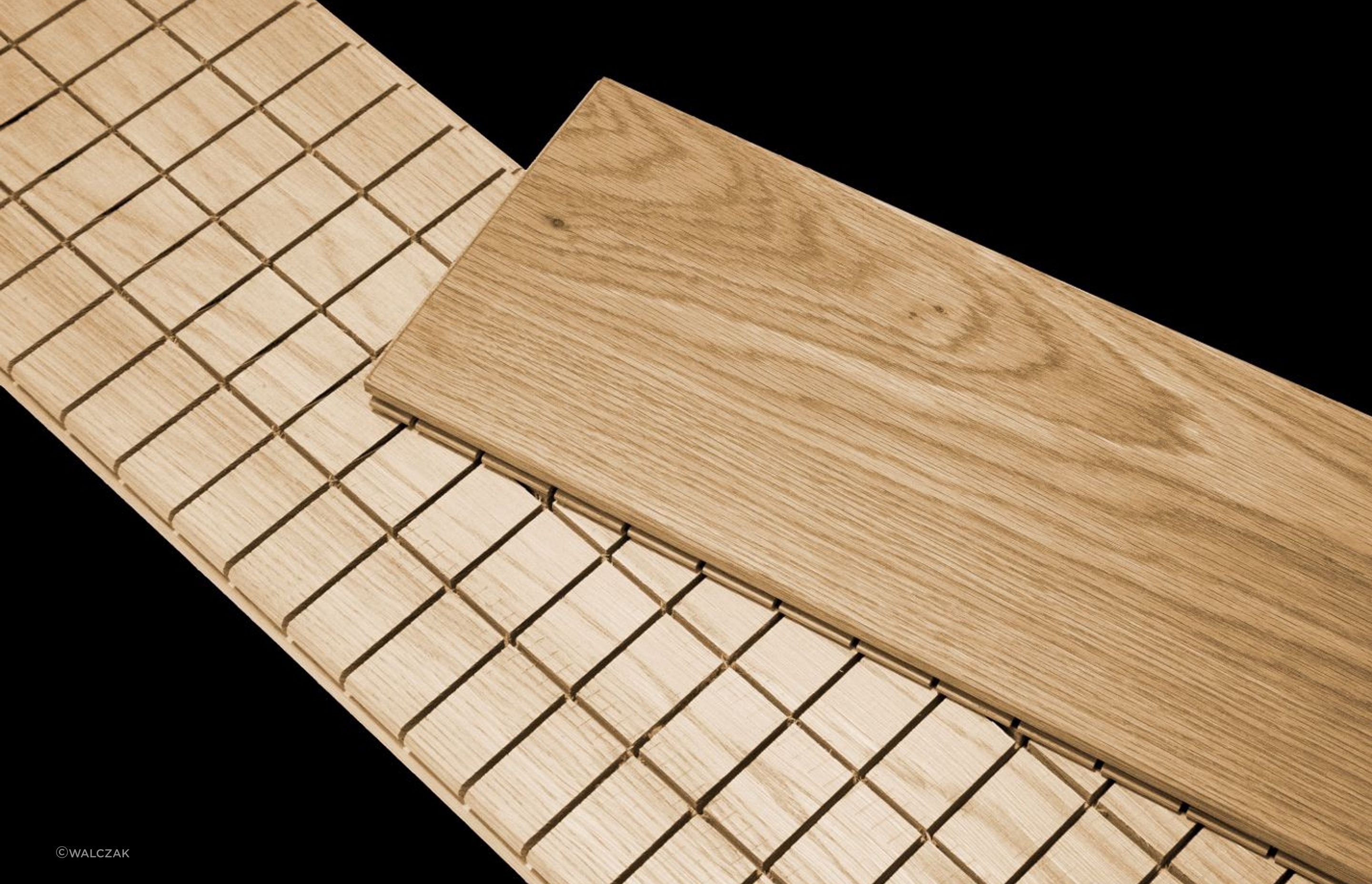Solid timber flooring for underfloor heating? Facts and Myths.

Installing wooden floors over underfloor heating is by no means easy. It requires a great deal of experience from heating and floor installers.
As a natural material, wood reacts to changing conditions such as humidity and temperature, and underfloor heating significantly increases the fluctuation of these factors. Underfloor heating should be designed with wood contraction and expansion in mind, as well as ensure even and non-abrupt dissipation of heat on the entire flooring surface. Floorboards, on the other hand, must have two major characteristics:
- Low heat resistance influencing the efficiency of the whole installation
- High dimensional stability decreasing the risk of permanent deformations

While deciding on natural wooden floors, one encounters a dilemma of whether to choose engineered or solid floorboards. Engineered floorboards have only a thin layer of the desired type of wood on top of layers of cheaper wood types, which significantly limits or even eliminates the possibilities of renovation. When it comes to solid floorboards, they are manufactured out of one wood type, thanks to which they are likely to last many decades. Solid timber floors can be repeatedly sanded, and the surface regains its original shine after every renovation.
The question is: Which floorboards are more suitable for underfloor heating?

Floorboard Stability
Experts connected to the engineered floorboards sector tend to believe that solid floorboards over underfloor heating are bound to deform sooner or later. This contention, however, results from their experience of working with floorboards made by highly questionable manufacturers, and there's research to prove that this is not the case when it comes to high-end products, such as solid floorboards made by WALCZAK.
"(...) particular properties of oak floorboards form WALCZAK Wooden Floors give them the attribute of a flooring material of increased dimensional stability" - Jerzy Majka, D.Eng, Poznan University of Life Sciences

It ensures the stability of the flooring even during increased fluctuations of humidity and air temperature caused by underfloor heating. Solid floorboards manufactured by WALCZAK achieve this effect thanks to their construction with transverse and longitudinal notches on the underside, which allow precise installation thanks to increased elasticity and guarantee the stability of the flooring during use.
The innovative character of this solution has been confirmed by a certificate granted by the Polish Patent Office. The notches on the floorboards are also crucial for the manufacturing process. WALCZAK's original drying and wood processing techniques made it possible to eliminate half of the factors responsible for changes resulting from the expansion and contraction of wood during fluctuations in conditions.

Thermal Conductivity
Another aspect of using floorboards over underfloor heating is their thermal conductivity. The thermal conductivity of wood depends predominantly on its density. Solid floorboards are made entirely of one wood type of high density and thermal conductivity, such as oak or ash.
In the case of engineered floorboards, the wood of low density and lower thermal conductivity, such as birch or conifers, is placed beneath the thin top layer. The negative effects of the engineered floorboards construction have been confirmed by the latest research, which has shown that:
- WALCZAK 's 16 mm thick solid floorboards have the same heat resistance as 14 mm thick two-layer boards
- 14 mm thick three-layer boards have 32% higher heat resistance than the two materials mentioned above, even though the test has been conducted without the foam sheet, on top of which this type of board is usually installed; the sheet would only aggravate this result.

Facts and myths
Are solid floorboards, therefore, suitable for underfloor heating?
Research, as well as opinions of numerous floor fitters, prove that they are. When deciding on floorboards for underfloor heating, one should trust the manufacturer's reputation more than whether the floorboards are solid or engineered.
"Our many years of experience have shown that solid timber flooring if prepared correctly, such as WALCZAK's floorboards, work better with underfloor heating than 3-layer engineered flooring" – Izabela Wojcik, the owner of the Live House Design Studio.
"We installed WALCZAK's floors over floor heating numerous times, and the material always worked perfectly" – Remi Golebiowski, expert floor installer and Live House Design Studio owner.
